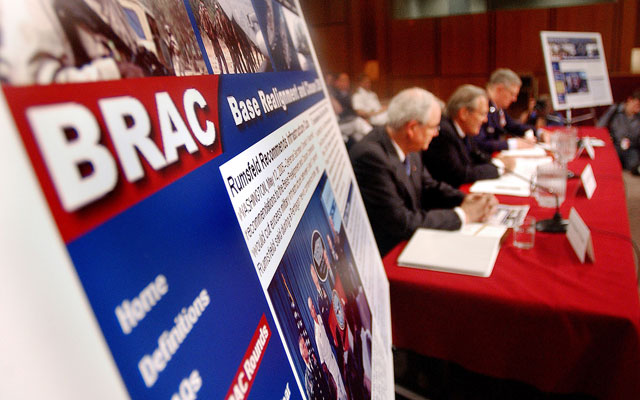The House Armed Services Committee will hold a hearing on whether Base Realignment and Closure (BRAC) is appropriate at this time, given the difficulties the U.S. faces throughout the world.
Last year, then-Secretary of Defense Leon Panetta requested two rounds of BRAC authority in 2013 and 2015. During last year’s hearing on the issue, Senator Claire McCaskill (D–MO) stated that “there is one area where there is absolutely no room for compromise this year: BRAC. I will not support the request for a BRAC process to be carried out in 2013.”
It is time to reassess the way Congress, the Pentagon, and the general public think about the BRAC process.
Rather than focusing on saving money—one of the primary purposes of BRAC—the planning should start with assessing what infrastructure the military needs to meet the requirements the political leadership places on it. Assumed savings often do not materialize. Take, for example, the most recent round of BRAC, conducted in 2005. According to last year’s data, net annual recurring savings decreased by 9.5 percent from the original estimate, and 20-year net present value savings decreased by 73 percent.
Assessment of the military infrastructure should be global, just as the Pentagon’s requirements are. The question “How much force is enough?” has haunted military planners, policymakers, and experts for decades. Do we have enough forward-deployed troops in the Asia–Pacific region, especially given the President’s “pivot to Asia” strategy? How many forces do we need to maintain in the Middle East and Europe?
The bird’s eye view of the issue should not lessen the importance of the grassroots element of the reassessment process. Local communities and businesses often provide services to the military establishments. They work with them day in and day out. They know the shortcomings and inefficiencies of the systems. A good reassessment process would harvest and incorporate this valuable knowledge. In addition, it might open opportunities to expand public-private partnerships, quite successfully implemented at select military depots. This performance-based logistics approach could save the Pentagon up to $32 billion a year.
Finally, transparency will increase the chances of success where previous rounds of BRAC failed. Public hearings—from local town halls to Congress—as wide an access to documents as possible, and clear criteria for which bases can be closed and how would ensure that the Pentagon does not have to pay unreasonable transition costs following the closure of facilities.
If intelligently executed, BRAC can help to ensure a successful, long-term defense transformation. In an era of declining defense budgets, such a goal is worth pursuing.































